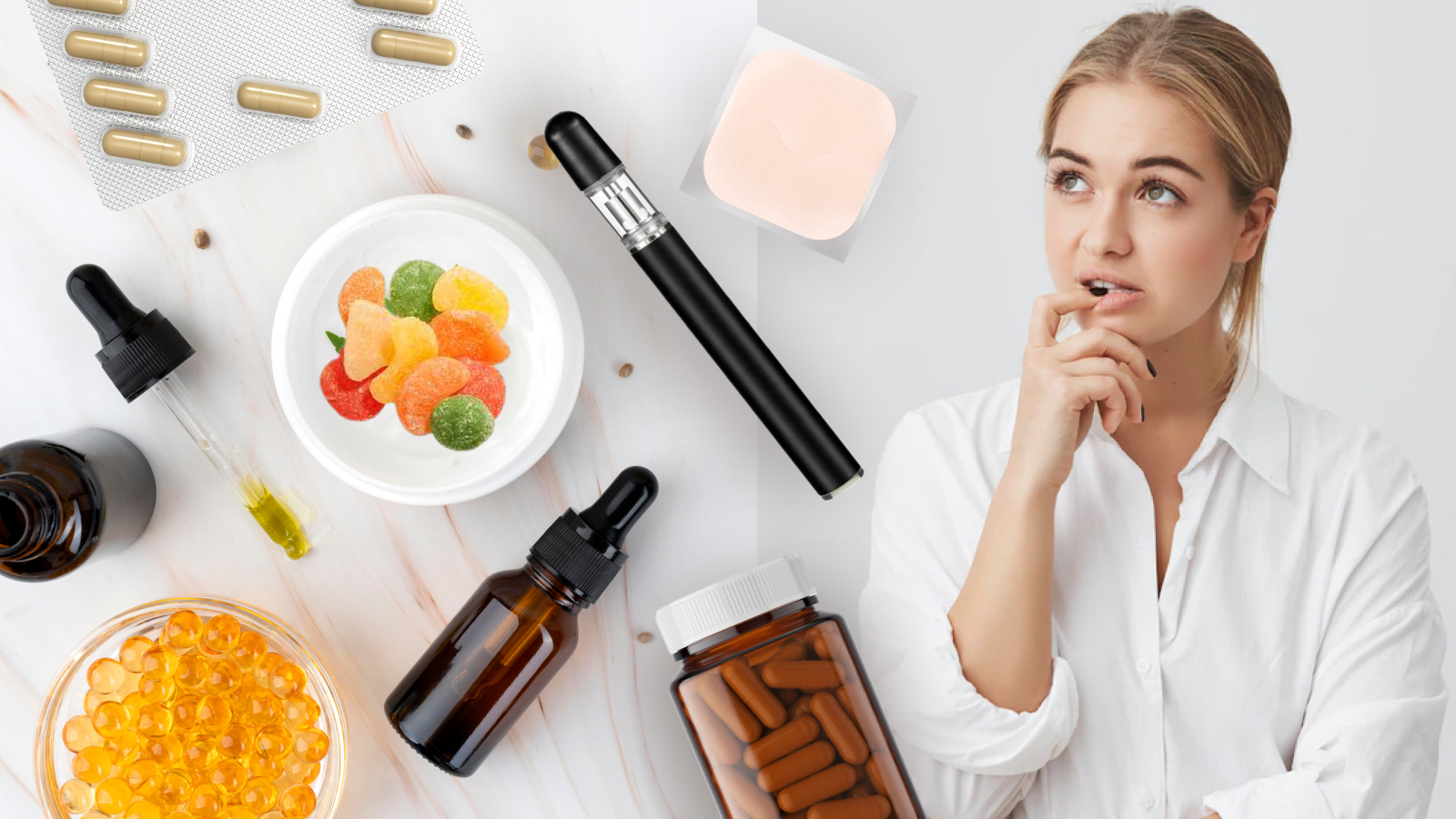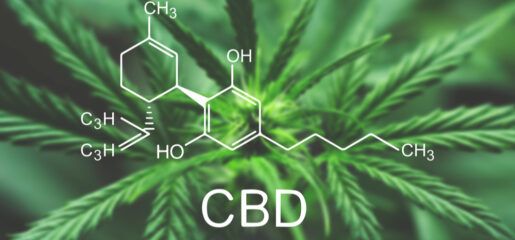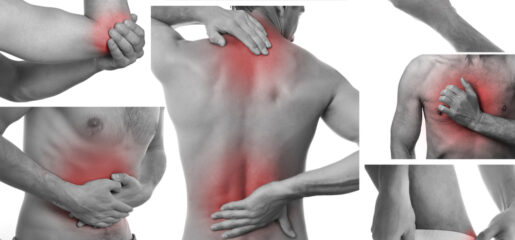
Our passion is to make sure that customers find a CBD product that’s a perfect match for their needs, but with so many different kinds of CBD and products available on the market, it can be difficult for even seasoned CBD users to really grasp what the differences are. It’s also common to get CBD products confused with hemp products (which are often in entirely different product categories).
All CBD products are not the same and the PhenoLife experts are here to discuss why. In this article, we’ll compare different delivery methods, formulas, and potencies that customers can expect to find when shopping for CBD. By the end, readers will have a much better understanding of what the differences between CBD products are, and how to choose the right one for their needs!
Summary:
- Inhaled CBD
- Ingested CBD
- Topical CBD
- Transdermal CBD
- CBD Formulas
- Custom CBD Formulas
- Product Potency
Delivery Methods Compared
One of the most misunderstood parts of CBD is the delivery methods customers can use, which are often seen as a matter of preference. How you take CBD will impact your experience, including how quickly you feel the effects, and how long you feel the effects.
Inhaled CBD
Inhaled CBD is a common, popular delivery method. Devices used for inhaling CBD (like PhenoPen), make getting a quick dose of CBD easy, and since you’re inhaling it, the CBD gets to your bloodstream very quickly. Inhaled CBD creates fast results (usually around 15 minutes) which makes it a great choice to address sudden, acute issues, though the effects only last a few hours.
Pros of Inhaled CBD
- Fast-acting
- Convenient
- Discreet
Cons of Inhaled CBD
- Harder to precisely dose compared to transdermal patches or capsules
- Effects only last a few hours
- There may be limits on where you can use vaporized CBD in public spaces
- Inhaled CBD still has the natural, earth taste of hemp
Ingested CBD
Ingested CBD is another popular form of CBD, where a CBD product is eaten, passes through the digestive system, and is absorbed into the bloodstream. Forms of ingestible CBD include oils, gummies, and capsules.
Dosing ingestible CBD can either be very easy (if a capsule or gummy is made with the exact dose you need) or can require a little bit of work (like measuring oil or cutting a gummy into halves or quarters). However, the ease of this form of CBD is largely unmatched, as long as you can tolerate the taste of gummies and oils, or you don’t have a problem swallowing capsules.
When you ingest CBD, it takes longer to feel the effects, since it has to work its way through your digestive system. However, the effects tend to last longer compared to inhaled forms of CBD. This makes ingestible CBD a great choice for helping customers stay asleep through the night.
One of the bigger downsides of ingestible CBD is its bioavailability (or how much of the CBD actually ends up in your bloodstream). Oils and gummies have notoriously low bioavailability (as low as 6% of the total CBD making it into your bloodstream). More potent CBD products are usually more expensive, but if their bioavailability is low, they end up not being a cost-effective solution.
If you choose an ingestible CBD option, make sure to choose a product that is specifically designed for maximum absorption (like PhenoGel capsules).
Pros of Ingestible CBD
- Very discreet
- Can make dosing easier
- Long-lasting effects
Cons of Ingestible CBD
- Takes longer to take effect (45 minutes to an hour)
- Low absorption rates (unless the product is specifically designed to be absorbed more easily)
- Dosing can be difficult if you are cutting gummies or measuring oil
Topical CBD
Topical CBD are products like lotions and gels that have been infused with CBD. Topical CBD is often used to help moisturize skin or help to alleviate localized pain (like a sore muscle). Unlike the other forms of CBD listed, topical CBD does not enter your bloodstream, so you will not get many of the benefits that CBD can provide, specifically with helping to manage anxiety, promoting better sleep, or tackling more pervasive pain.
Pros of Topical CBD
- Easy to apply
- Can help with localized muscle pain
- Can help improve skin health
Cons of Topical CBD
- Does not enter the bloodstream
- Will not help to manage anxiety, sleep, or pervasive pain issues
- General, full benefits of CBD not provided
Transdermal CBD Patches
Finally, transdermal CBD patches (like the PhenoPatch) are some of the newest CBD products on the market. These patches are applied to the skin, and are designed to remain attached for up to 8 hours. Unlike topical CBD, transdermal patches get CBD into the bloodstream, so you’ll get the full benefits that CBD can provide.
Unlike inhaled CBD or even CBD capsules, transdermal CBD patches provide slow, continuous dosing. If you don’t want to worry about regularly dosing throughout the day, or you want a steady dose of CBD to keep chronic issues at bay, a transdermal patch may provide the best experience.
Another advantage of transdermal patches is that, since they avoid the digestive system, their bioavailability levels are extremely high (upwards of 80% or higher). That means the vast majority of the CBD on the patch is making its way into your bloodstream, which will reduce your overall CBD dosage needs.
As with ingestible CBD, transdermal patches will need time to deliver CBD into the bloodstream. It can take up to an hour for a transdermal patch to begin to provide relief.
Pros of Transdermal CBD Patches
- Long-lasting effects (8+ hours of relief))
- Discreet
- Very high bioavailability
- Hassle-free
Cons of Transdermal CBD Patches
- Can take up to an hour to feel the effects
- Need to make sure to properly apply patch for full effects
Mixing CBD Delivery Methods
There is no one “perfect” delivery method for CBD, so customers will need to take time to determine which delivery method is the best match. Many customers opt to mix delivery methods for maximum results (like inhaling CBD and using a transdermal patch together, so the effects are both fast and long-lasting).
CBD Formula
It comes to the surprise of many customers that not all CBD formulas are the same. There are different types of formulas made for different reasons, and understanding the differences can give you better results (and even help save on unnecessary costs).
Full-Spectrum
Full-spectrum CBD is the least processed form of CBD. While the primary compound is CBD, it will contain the “full spectrum” of cannabinoids and terpenes that were present in the processed hemp. Most notably, full-spectrum CBD will contain trace amounts of THC, though it’s not enough to create any kind of high.
The reason why customers often look to full-spectrum CBD is because of a phenomenon called the entourage effect. In short, this effect describes how cannabinoids may work together to produce a more potent, overall effect. Research is still on-going about what specific benefits the entourage effect may provide.
All PhenoLife products use full-spectrum CBD, unless otherwise noted.
Broad Spectrum
Broad spectrum CBD is very similar to full-spectrum CBD, except all traces of THC have been removed. Broad spectrum CBD may still offer some benefits of the entourage effect while allowing customers to avoid THC. Since this kind of CBD is more processed, it tends to be more expensive than full-spectrum CBD products.
CBD Isolate
Finally, CBD isolate means that the only hemp-derived compound present is CBD. There are no other cannabinoids or terpenes. Since this form of CBD is the most processed, it tends to be the most expensive.
Custom CBD Formulas with Added Ingredients
After the specific kind of CBD is accounted for, it’s common for products to include additional ingredients to help target specific results. The custom CBD formulas with added ingredients will vary widely from brand to brand, but we can look to our targeted CBD formulas as examples:
PhenoLife Body
In our Body formulas, we’ve added extra levels of CBE (another naturally occurring cannabinoid found in hemp). CBE may help provide anti-inflammatory benefits, similar to CBD, so we’ve added higher levels for extra pain-relieving power.
PhenoLife Mind
In our Mind formulas, customers will find extra levels of CBG (another minor cannabinoid naturally occurring in hemp). Similar to the extra benefits of CBE, CBG may provide additional stress or anxiety-relieving benefits, which is why we’ve added more of it to this custom formula.
PhenoLife Sleep
Finally, our PhenoLife Sleep formula has extra levels of CBN added to the full-spectrum CBD formula we use. CBN is another naturally-occurring cannabinoid that might provide extra benefits for healthier sleep patterns, which is why we’ve added extra levels of it to this sleep formula.
Product Potency
The last major difference among CBD products is their potency, but there are two major factors that can impact how potent a CBD product really is.
Amount of CBD in a Dose
The most obvious factor is how much CBD is in each dose. Generally, the more CBD present, the more potent a product will be. When you’re first starting out with CBD, we usually recommend you start with low doses and work your way up. Since CBD is usually easily tolerated, many of our customers are able to work up to potent doses that provide great results.
Absorption Differences
While the level of CBD will impact potency, the amount of CBD that’s actually absorbed will impact potency as well. For example, a 25mg CBD gummy will have less potency than our PhenoGel capsules of the same strength, since our capsules are designed to protect the CBD as it passes through your digestive system.
Importance of 3rd Party Lab Testing
Since the CBD industry has little to no regulation, the only way to know how much CBD is in a product is to get a third party lab test. These tests will show what other cannabinoids are in a product, and if there are filler or harmful additions to CBD products This means the brand has sent samples of their products to an independent lab, the lab has tested the results, and the brand has published those results publicly for customers to view.
PhenoLife offers 3rd party lab results on all of our products, so customers can easily see exactly how much CBD is present, and whether products are free of impurities. Customers should only buy from brands that offer lab results, since it’s the only way to know how potent your potential product is, as well as how safe it is.
Conclusion
By now, you should have a general idea of how CBD products differ. In particular, you should know the difference between:
- CBD delivery systems
- CBD formulas
- Custom CBD formulas
- Product potency
If you have any questions about the differences between products, or how to match CBD products to your needs, reach out to us! We love to make sure customers confidently choose a product that fits their needs well, and we can help to narrow down product options so you can more easily make a choice.
We look forward to hearing from you soon!

